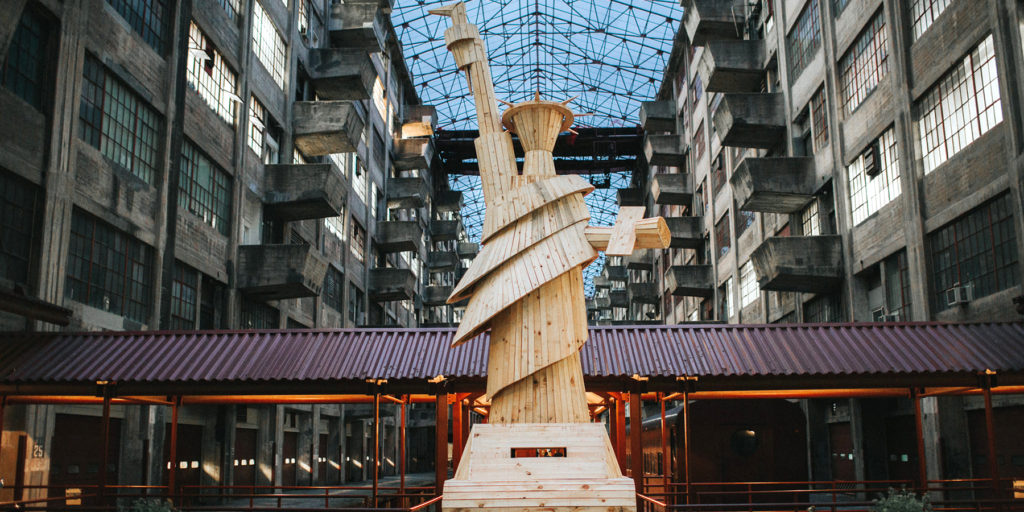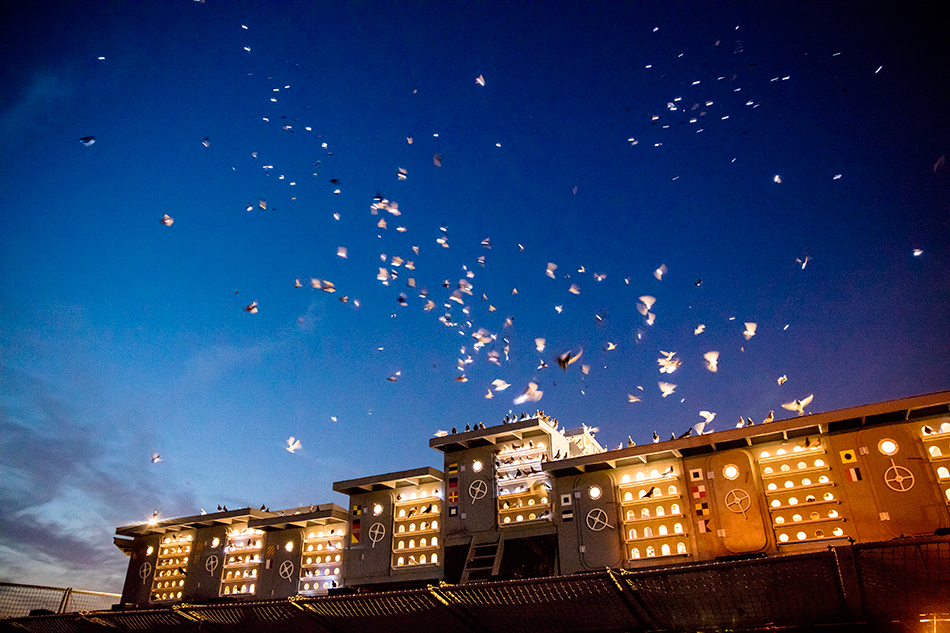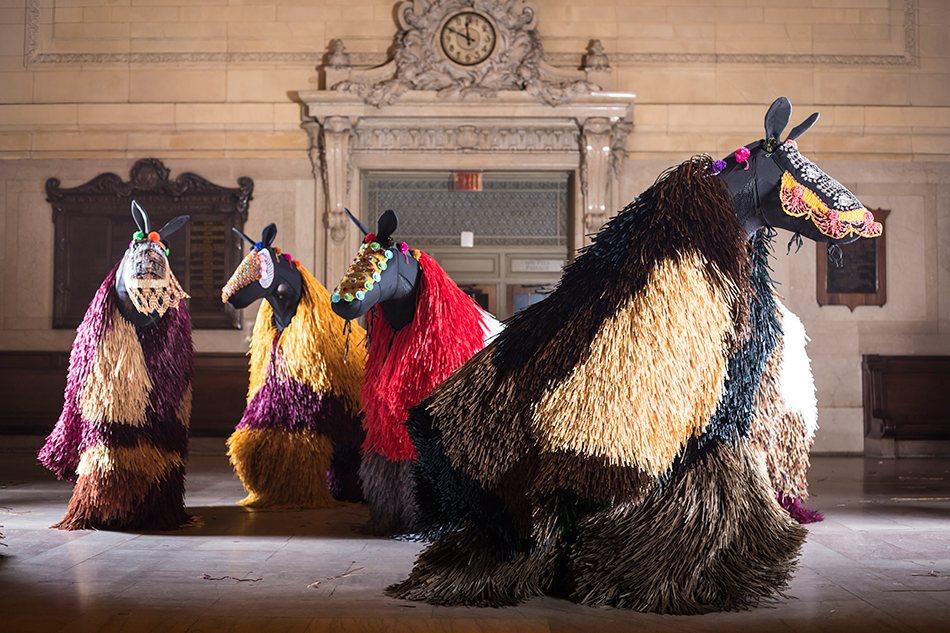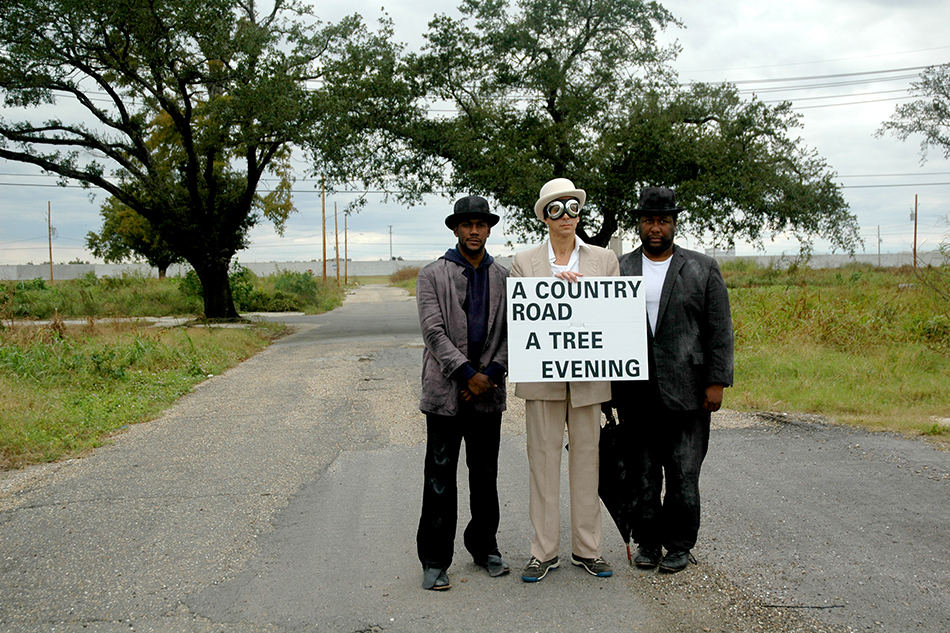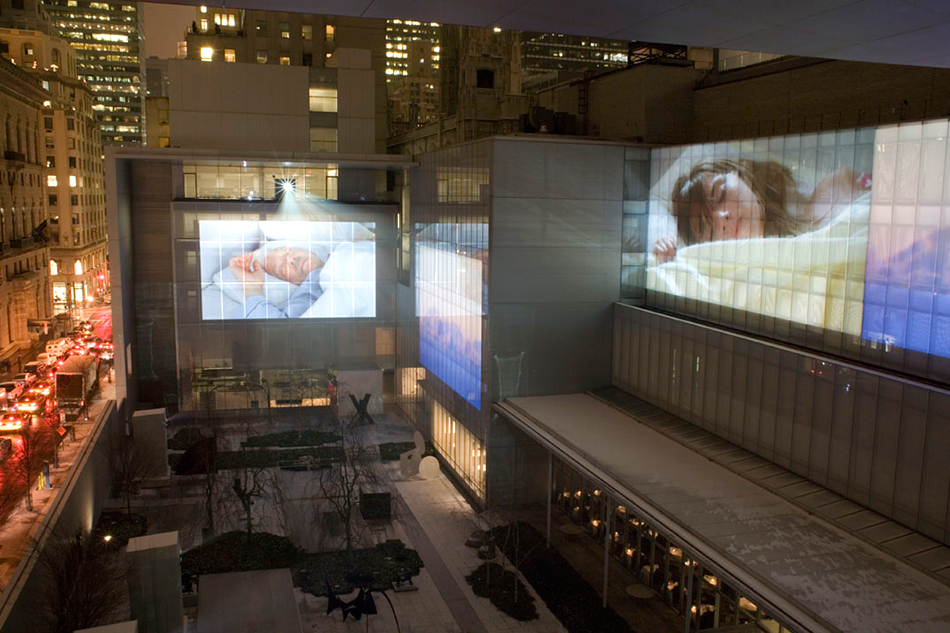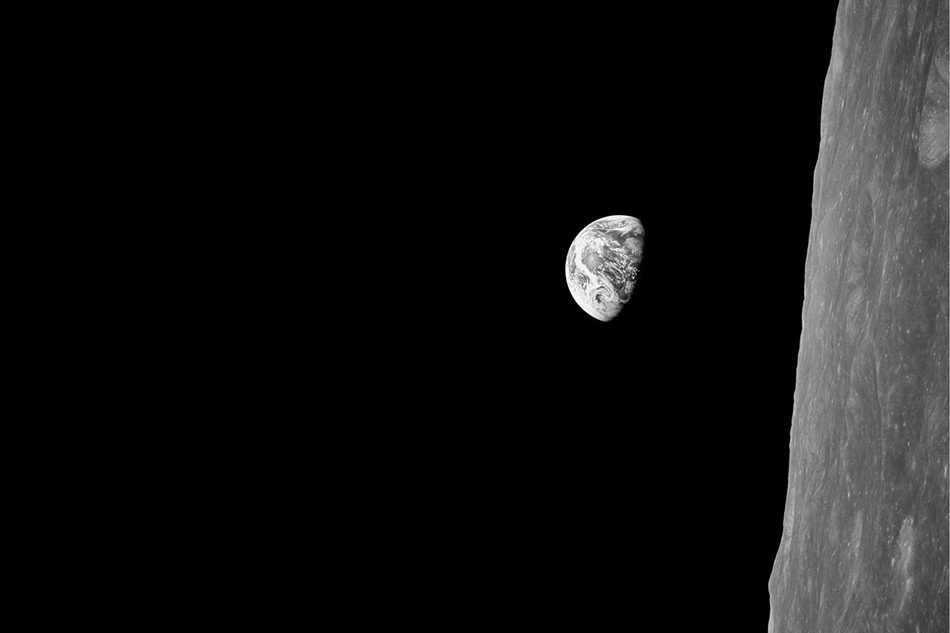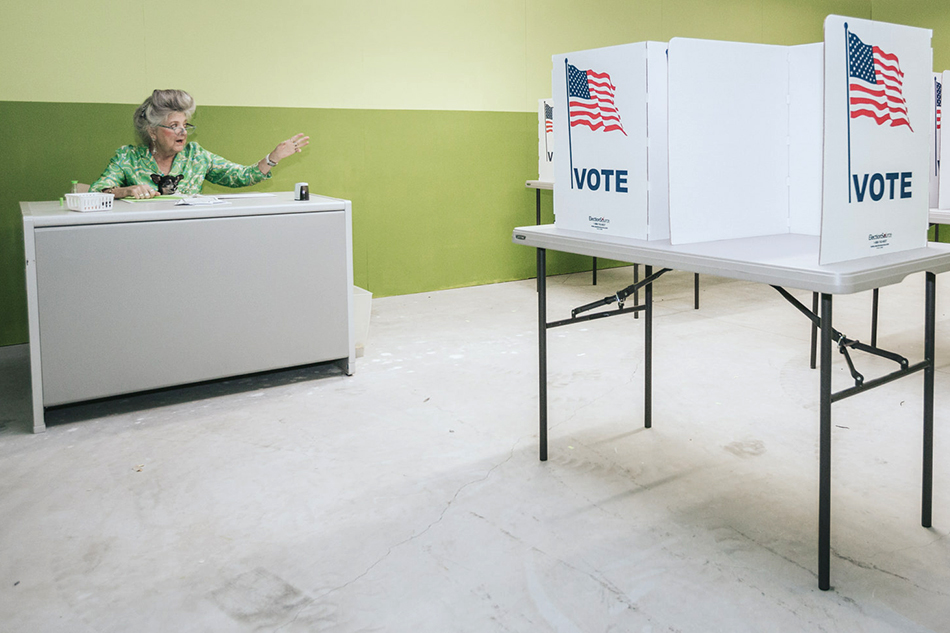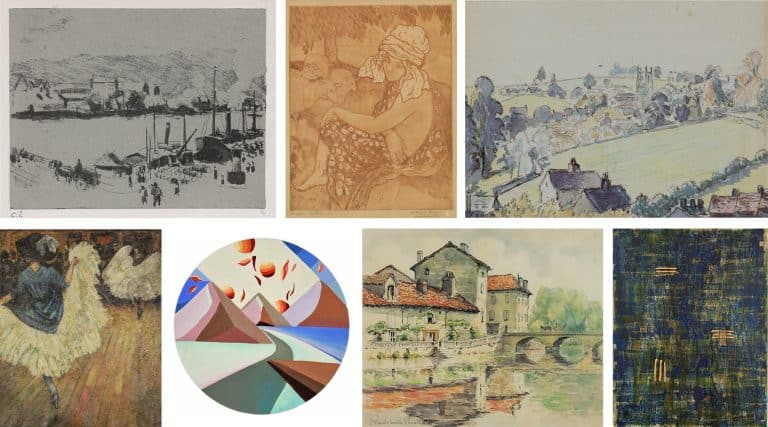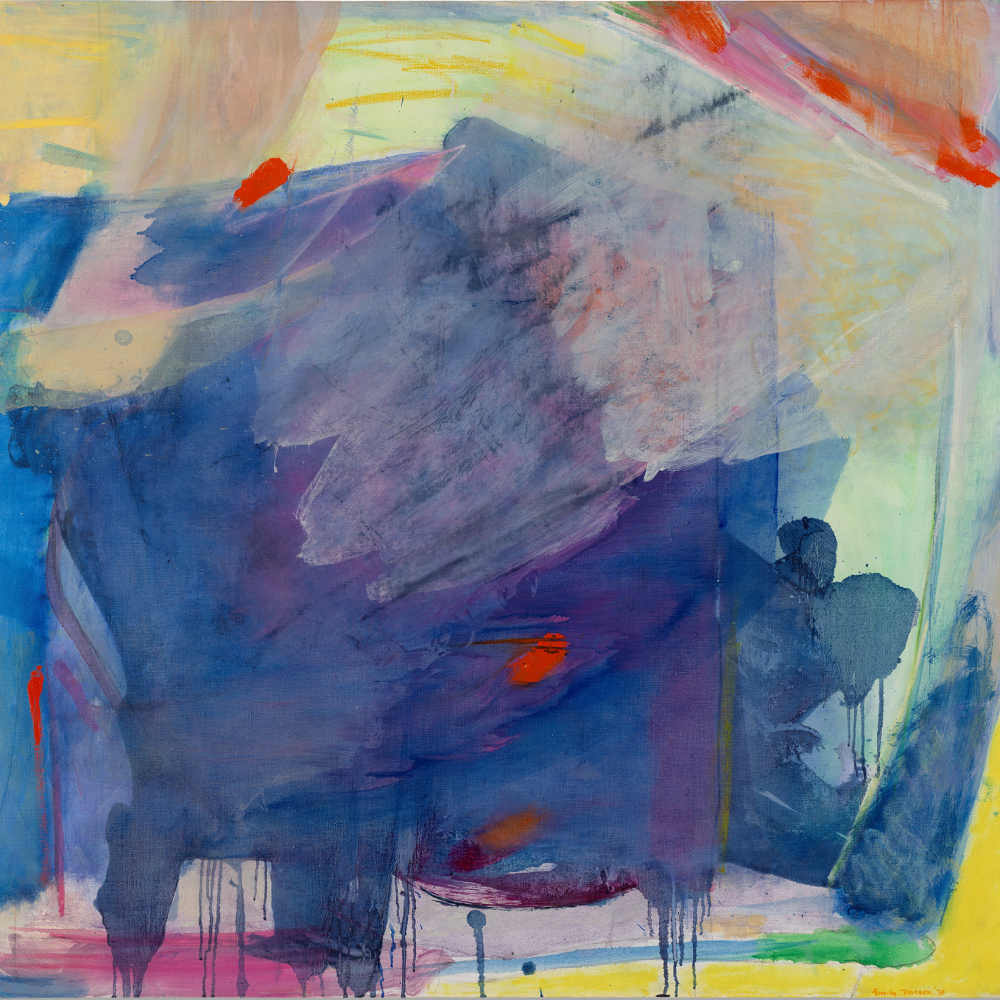
October 10, 2016In one Doomocracy room, titled “Artisanal Air,” actor Carolina Do presents a futuristic take on breathing (photo by Will Star, Shooting Stars Pro). Top: Lady Liberty, an artwork inspired by Argentine cartoonist Quino, stands at the center of the Brooklyn Army Terminal, the site of Doomocracy (photo by Will Star, Shooting Stars Pro). All photos courtesy of Creative Time & noted photographers
The day after a trial run of artist Pedro Reyes’s Doomocracy — an apocalyptic haunted house, mounted by Creative Time, which opened this past weekend — artistic director Nato Thompson is giddy with excitement. “I’ve never worked on anything remotely like this,” he says. “It’s kind of a thrill ride.”
Thompson is wary of spoiling any surprises sprung by the doomsday scenarios presented in the piece, but he agrees to reveal the contents of one room, which Reyes has tricked out like a funeral parlor. “There is a coffin that is a Twinkie,” he says. “The funeral director specializes in custom coffins for children who die from sugar-related illnesses. The coffin is coated on the inside with food you can lick. It’s totally depressing. Somehow it manages to be insanely funny.”
Part installation, part immersive theater, Doomocracy is a textbook example of the kind of exhibitions that are the forte of Creative Time, a New York–based nonprofit founded in 1974: politically subversive projects that don’t shy away from humor or spectacle. “I don’t want good projects,” Thompson says. “I want blow-your-mind projects.”
However different they may be in other respects, all Creative Time’s projects tend to have a “wow” factor:Kara Walker’s towering mammy-sphinx made of white sugar, Duke Riley’s pigeons flying in formation across the night sky with LED lights strapped to their legs, the dancers in Nick Cave’s horse-like “Soundsuits” passing through Grand Central Terminal at rush hour, Paul Chan’s staging of Waiting for Godot in New Orleans in that city’s Lower Ninth Ward in the aftermath of Hurricane Katrina.
The common denominator, according to executive director Katie Hollander, is that each piece is “timely, relevant and pushing the boundaries for the artist as well as exposing the public to new ways of experiencing art. The hope is that it makes a lasting impression on people, whether it’s around a political or social issue or just a transformative moment.”

Creative Time Executive Director Katie Hollander stands behind Sebastian Errazuriz’s Chicken Lamp, part of a 1stdibs installation at the entrance to the organization’s gala, held last spring in the Brooklyn Navy Yard. Photo © BFA
When Thompson floated Reyes’s idea for a “satirical, political, haunted house,” Hollander recalls, she was overwhelmed. After eight years as deputy director, she had just been promoted in February, succeeding Anne Pasternak, who had become director of the Brooklyn Museum. “I was like, ‘That’s a brilliant idea, but I have absolutely no capacity to contend with it right now.’” With the organization’s annual gala approaching, as well as the May opening of Riley’s aforementioned Fly By Night, she wasn’t planning on mounting a fall project.
What was happening on the national scene changed her mind. “As the election season became even more scary and outlandish and absurd, we realized that if we were going to do it, we really had to do it now, this particular election season,” she says. “It wasn’t something that could wait. People really needed this art.”
Thompson cautions, however, that the project is not about the presidential campaign, or even electoral politics, specifically. “The specter of a Trump universe is haunting many people,” he says with a laugh. “That said, it’s not just the election. Climate change is here no matter who wins.”
Once everyone was on board with the concept, the project still needed a location.Hollander was invited to tour the Brooklyn Army Terminal. A native of the borough, she had nonetheless never heard of the huge complex, which was built at the tail end of World War I as a depot for troops and supplies and now houses commercial tenants. But when she saw it, Hollander, always on the lookout for potential art sites, knew she had found a match. “It has this kind of apocalyptic architecture,” she explains.
The marriage of concept and location, Hollander says, is perhaps the biggest point of difference between Creative Time and other public art groups in New York. “We’re not bound to any one particular site,” she says, as, say, the High Line, Mad. Sq. Art and the Park Avenue Armory are. “The site and the idea and the artist — those all have to be aligned. There has to be a real sense of harmony. We have a flexibility that lets us discover a space that resonates with an idea the artist is contending with or have a site and then have an artist respond to that particular site and its history or its place in the city.”

In 2014, Creative Time presented a sphinx-like, sugar-coated female figure by artist Kara Walker at Brooklyn’s now-defunct Domino Sugar Factory. Photo by Jason Wyche
For a case study in how a site can inspire an iconic artwork, consider Walker’s blockbuster 2014 exhibition, formally titled At the behest of Creative Time Kara E. Walker has confected: A Subtlety or the Marvelous Sugar Baby an Homage to the unpaid and overworked Artisans who have refined our Sweet tastes from the cane fields to the Kitchens of the New World on the Occasion of the demolition of the Domino Sugar Refining Plant. In early 2013, Creative Time got word that the Domino Sugar Factory in Brooklyn — familiar to generations of New Yorkers for its iconic sign over the East River — might be available for an art installation before being razed to make way for condos. Walker toured the site in March or April. “She spent a lot of time doing research and thinking about it, but we didn’t have an actual concept, a sketch or anything, until probably early fall,” Hollander says. “That’s a little unusual for us, to just hand over a site. Usually we have something a little bit more concrete.”
But the team knew they could trust Walker to come up with something brilliant. The exhibit opened the following May and quickly became a sensation. Crowds lined up in the blazing summer sun for a chance to enter the dark building, its walls dripping with molasses, and see sticky figures of slave children slowly melting in the heat (and take selfies with them). The convergence of material, location and theme — an installation made of sugar about the sordid history of sugar production, housed in an old sugar factory — produced a tour de force of public art.
“Definitely that project was monumental for us and for her,” Hollander says. “It brought so many people out that maybe weren’t accustomed to going to see public art, and that was really gratifying.”

Julian Laverdiere and Paul Myoda’s 2002 Tribute in Light — consisting of two shafts of light projected upward — has been mounted annually in Manhattan to commemorate 9/11 since six months after the tragedy. Photo by Charlie Samuels
“Other projects are similarly entwined with the city’s history: The annual Tribute in Light, for example, in which two vertical shafts of blue light are projected upward, over the Manhattan skyline, evokes the World Trade Towers brought down on 9/11. But not every Creative Time undertaking packs such an emotional punch. Some, such as the self-explanatory summertime Artist Sandcastle Competition, feel more like entertaining diversions. Drifting in Daylight, mounted in Central Park last year, was billed as a “dreamy springtime pathway of art winding through the world’s most iconic park.” Spencer Finch devised an ice cream truck that used solar power to make frozen treats in sunset colors. Visitors could lick their free cones while watching two actors re-create a scene from Woody Allen’s Bullets over Broadway (over and over and over again), courtesy of David Levine, or while strolling by Nina Katchadourian’s handwoven birds’ nests hanging from lampposts.
A piece needn’t be overtly political to be compelling, Hollander and Thompson say. “You don’t want to sit at dinner and only talk about dour political stuff. You also want to talk about the funny, trivial things in people’s lives,” explains Thompson. He cites Fly By Night as an example. Although the piece evoked the history of pigeon keepers, who have been displaced by gentrification, it was also, he points out, about “the ability to be with people and enjoy something beautiful and dreamy together, five-year-olds and eighty-five-year-olds all having a childlike look in their eyes, together.”
Much public art, however, does involve some degree of sociopolitical engagement. This consideration led the organization to expand beyond its original mission of commissioning new work and produce Creative Time Reports — op-ed pieces by artists, now published in conjunction with The Guardian — and Creative Time Summit. The first summit, held in 2009 at the New York Public Library, featured artists like Edgar Arceneaux, whose public practice includes redeveloping troubled neighborhoods in Los Angeles.

Creative Time and the Central Park Conservancy presented Drifting in Daylight, which comprised performance, participatory and perceptual artwork, in 2015, to celebrate the conservancy’s 35th anniversary. One of Nina Katchadourian’s handwoven birds’ nests hangs from a lamppost in front of the Art Deco twin towers of the El Dorado apartment building. Photo by Odette Chavez-Mayo
The conference has grown into an annual event, the only one of its kind considering the intersection of art and social change. This year’s edition, titled “Occupy the Future,” will be held in Washington, D.C., from October 14 through 16, just a few weeks before the presidential election. Among the dozens of scheduled speakers and performers are Hank Willis Thomas and Eric Gottesman, the cofounders of For Freedoms, the first artist-run super PAC. Pass prices top out at $300 for patrons, but an individual can buy one for $100, an artist for $65 and a student for $50. There’s even what Creative Times calls a Still Too Much? pass for $25.
When admission to a project is limited — Doomocracy, for instance, has timed entry passes — donors get priority. But the tickets are always free. “That is a challenge,” Hollander admits. The group has contemplated charging admission, but it’s not a practical, since most of the projects are in venues easily accessible to the public. “More importantly, it’s a cultural value for the organization. I think right now it’s super important that our projects remain free, that they feel accessible to everybody. That’s what makes them so special.”
In some cases, there is no actual audience.For his 2012 project, The Last Pictures, Trevor Paglen, with the help of a satellite company, sent a disc micro-etched with a hundred photographs into space, its orbit destined to last as long as the earth.
“What a gift the mission of Creative Time is,” Thompson says. “We can do anything.”
